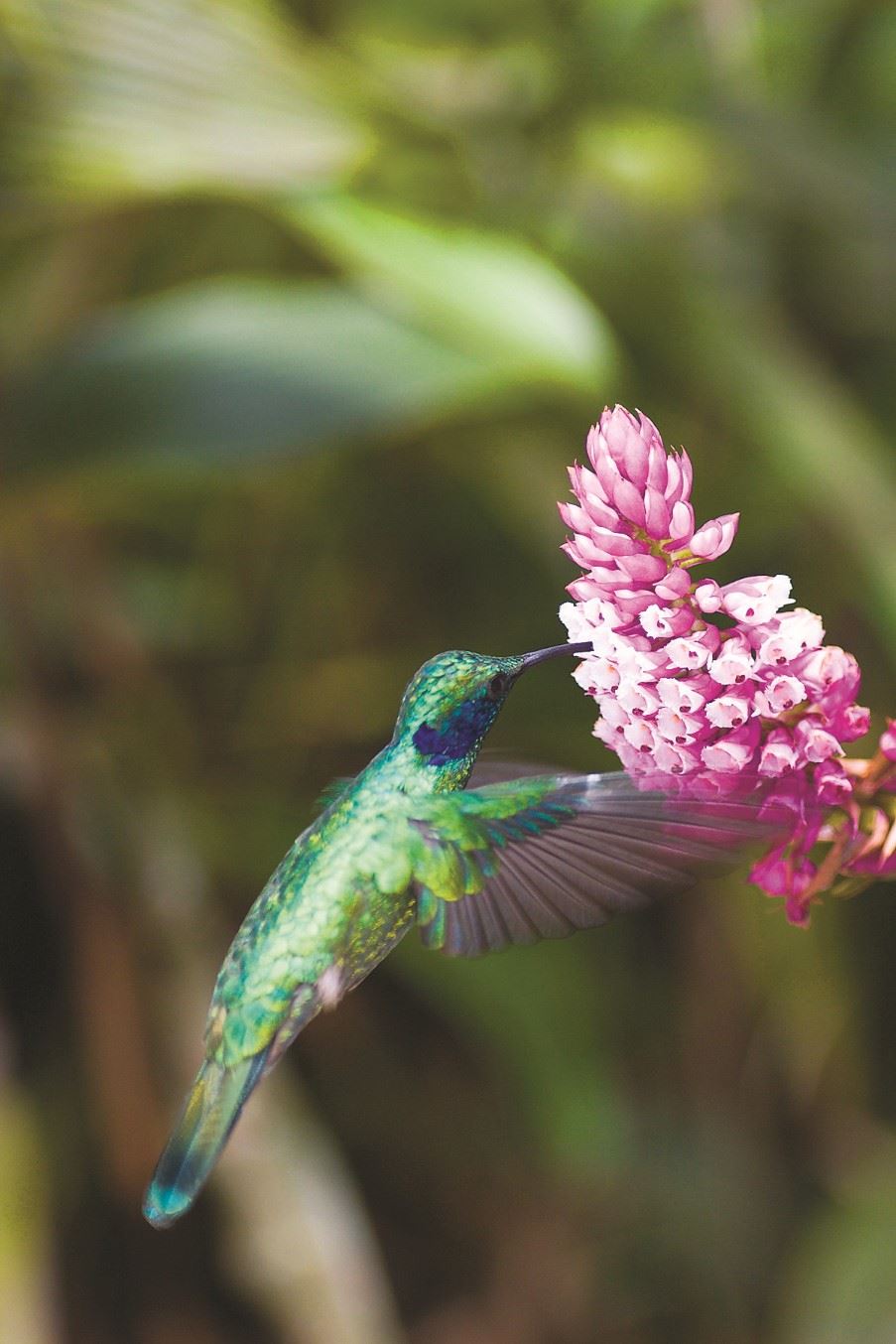All of the world’s 330 species of hummingbirds live exclusively in the Americas, predominantly in the tropics. They are among the smallest of birds – indeed the smallest bird species is the 5cm Bee hummingbird. Over 50 species of hummingbird have been recorded in Costa Rica and 130 in Ecuador.
They can beat their wings up to 80 times a second (depending on the species), thus producing the typical hum which sounds like bees. This exceptionally rapid beat, combined with the ability to rotate the whole wing, enables them to hover in place when feeding on nectar (their preferred food), or even to fly backward! They can fly at speeds up to 34 mph. Like bees, they are able to assess the amount of sugar in the nectar they eat and they reject flowers that produce nectar that is less than 10% sugar. Most species have bills that are long and straight but in some species the bill shape is adapted for specialised feeding such as the Thornbills which have short, sharp bills for feeding from flowers with short corollas and piercing the bases of longer ones. They consume more than their own weight in nectar each day.
To conserve energy species living in the mountains go into a nightly hibernation which lowers their metabolism drastically. They do not spend all day flying as the energy cost would be prohibitive and spend only around 10% of their time feeding. They are generally very territorial and will strongly defend their feeding territory fighting off any other bird that tries to feed. The males of some species gather together in a communal area, where they attract females. After, mating, however, males play little or no part in nesting or chick rearing.
The dazzling colours of hummingbirds are created by prism-like cells on the end of their feathers. A shining green is the normal colour of most hummingbirds in addition to splashes of red, yellow, purple and blue, usually in the head and upper breast area. Normally the males are the brightest in terms of colour. They are very inquisitive birds and walkers often notice a sudden ‘Zzzip’ as it comes close to inspect before zipping off again. Females when discovered on the nest, will often flutter off gently like moths, in an attempt to hoodwink predators. Many hummingbirds die during their first year of life, those that survive may live a decade or more.


